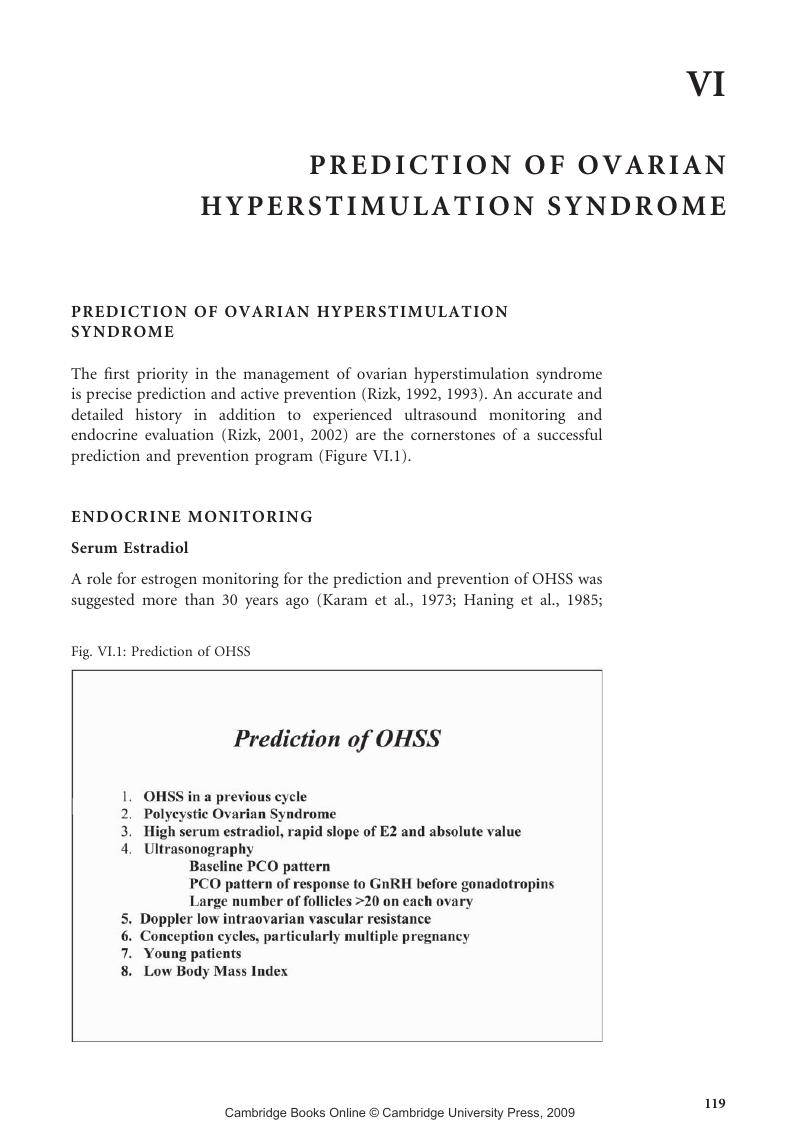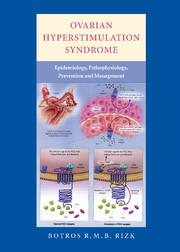Book contents
- Frontmatter
- Contents
- Foreword by Robert G. Edwards
- Preface
- I Classification of Ovarian Hyperstimulation Syndrome
- II Epidemiology of Ovarian Hyperstimulation Syndrome: Iatrogenic and Spontaneous
- III Pathophysiology of Ovarian Hyperstimulation Syndrome
- IV Genetics of Ovarian Hyperstimulation Syndrome
- V Complications of Ovarian Hyperstimulation Syndrome
- VI Prediction of Ovarian Hyperstimulation Syndrome
- VII Prevention of Ovarian Hyperstimulation Syndrome
- VIII Treatment of Ovarian Hyperstimulation Syndrome
- Index
- Plate section
- References
VI - Prediction of Ovarian Hyperstimulation Syndrome
Published online by Cambridge University Press: 11 August 2009
- Frontmatter
- Contents
- Foreword by Robert G. Edwards
- Preface
- I Classification of Ovarian Hyperstimulation Syndrome
- II Epidemiology of Ovarian Hyperstimulation Syndrome: Iatrogenic and Spontaneous
- III Pathophysiology of Ovarian Hyperstimulation Syndrome
- IV Genetics of Ovarian Hyperstimulation Syndrome
- V Complications of Ovarian Hyperstimulation Syndrome
- VI Prediction of Ovarian Hyperstimulation Syndrome
- VII Prevention of Ovarian Hyperstimulation Syndrome
- VIII Treatment of Ovarian Hyperstimulation Syndrome
- Index
- Plate section
- References
Summary

Information
- Type
- Chapter
- Information
- Ovarian Hyperstimulation SyndromeEpidemiology, Pathophysiology, Prevention and Management, pp. 119 - 129Publisher: Cambridge University PressPrint publication year: 2006
